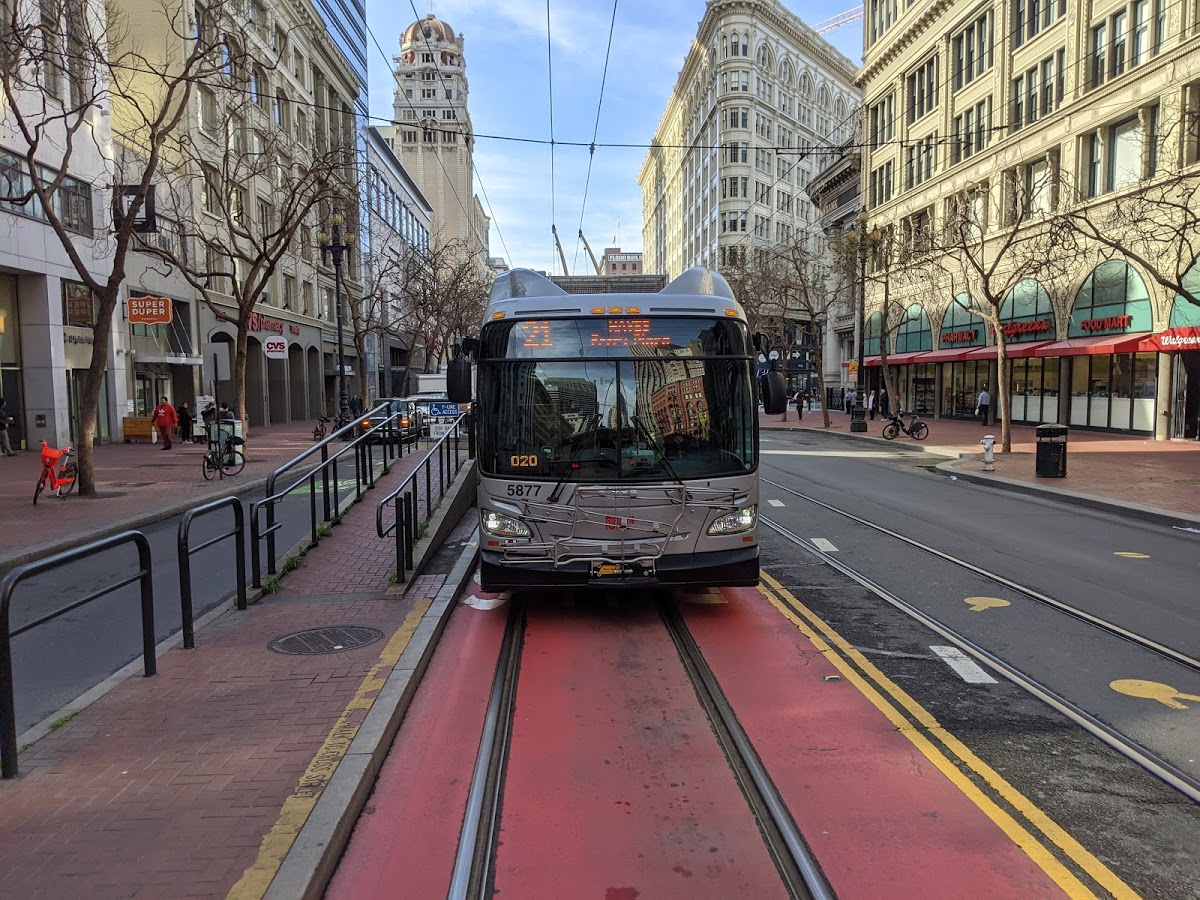 Detroit's once bustling streets are a bicyclist's paradise now, wide open and empty.
Detroit's once bustling streets are a bicyclist's paradise now, wide open and empty.Visiting the ghostly motor city these days is an eye-opening and surprisingly inspiring experience. The city has fallen from more than 2 million residents a generation ago to around 800,000 today. A great deal of the land area where homes and factories once filled the blocks are now expansive vacant lots, masquerading as greenways in this wet June, filled with grasses and wildflowers. Some of these vacant lots have been converted into urban farms, but the larger majority is simply empty, reverting to some version of nature. Wild pheasants skitter across the vacant lots while songbirds, from bright red cardinals to brilliant yellow finches, fill the trees and bushes with their cheerful sounds.
 Wild pheasant runs across empty lot in east Detroit.
Wild pheasant runs across empty lot in east Detroit.Detroit, like everywhere in the U.S., was a big bicycling town during the 1890s. Lost to most of our memories now is the relationship between that bicycling boom in the late 19th century and the automobile industry that came to dominate personal transportation and 20th century industrial life.
In 1894 more than 250,000 bicycles were manufactured in the United States; 400,000 in 1895. In 1899, 312 bicycle factories, with capital worth $30 million and a production of 1.1 million machines, worked to satisfy enthusiasts. The bikes cost $100 plain and $125 fancy, a not inconsiderable sum of money at the time. But within 10 years the bicycling fade began to fade, replaced by newfangled motorized contraptions.
Many auto manufacturers got their start as bicycle makers, notably Dodge, whose namesake brothers produced bicycles until 1901 when they opened a machine shop in Detroit to make stove parts, and later auto parts. In 1910 they established The Dodge Brothers plant in Hamtramck, where they made engines and other parts for Ford and Olds. In 1913 they began making cars and by their deaths in 1920 their company was one of the largest in the industry.
 Henry Ford with a bicycle in the early 1890s.
Henry Ford with a bicycle in the early 1890s.Henry Ford got his start making bicycles too, and when he came out with the quadricycle he set off a craze in Detroit. It wasn’t until 1902 that he got his first motorized vehicle going but it was so fast that he was afraid to drive it himself.
 LisaRuth cruising through the empty fields of eastern Detroit.
LisaRuth cruising through the empty fields of eastern Detroit.In Detroit for the US Social Forum (I’ll have a report posted shortly at my blog) we spent some happy hours bicycling around the wide open city. An early stop was The Hub, Detroit’s most vibrant community bike shop, where one of the guys got excited by our questions and immediately pulled out their only copy of an old 1896 bicycling map of Detroit.
 Ogling the 1896 map.
Ogling the 1896 map. The full 1896 map of bike ways in Detroit, color coded.
The full 1896 map of bike ways in Detroit, color coded.
 The conditions for bicycling by color code.
The conditions for bicycling by color code. Close-up on Downtown area of Detroit.
Close-up on Downtown area of Detroit.After three days at the Social Forum, more and more bicycles piled up on every lockable fence and pole in front of the big downtown convention center Cobo Hall (I’m sure it had never experienced so many convention goers arriving by bike), we helped our hosts promote Critical Mass on Friday night.
 Bikes locked all over the front of Cobo Hall convention center in Detroit.
Bikes locked all over the front of Cobo Hall convention center in Detroit.
Detroit has had a small-ish Critical Mass going back some years, but this was its biggest ever, about 375 riders. A great route was planned and most followed, which took us downtown, along the riverfront, out into eastern Detroit, through the remarkable Heidelberg Project, and finally back into the center of the City. Here’s a gallery of shots.
 Critical Mass rolls through the Heidelberg Project in eastern Detroit.
Critical Mass rolls through the Heidelberg Project in eastern Detroit. In eastern Detroit.
In eastern Detroit. Rollling past Cobo Hall in downtown.
Rollling past Cobo Hall in downtown. The arterial routes in and out of town are incredibly wide. This is Gratiot inbound.
The arterial routes in and out of town are incredibly wide. This is Gratiot inbound. Rolling back out of downtown towards the end of the ride.
Rolling back out of downtown towards the end of the ride.One of the best parts of this Detroit Critical Mass was the enthusiastic reception by locals all along the way:
 Enthusiastic fast food workers take an unauthorized break to cheer us on.
Enthusiastic fast food workers take an unauthorized break to cheer us on. A front porch bbq greeted us with hoots and hollers.
A front porch bbq greeted us with hoots and hollers. Downtown bar patrons came out to cheer too.
Downtown bar patrons came out to cheer too. These kids were climbing the fence with excitement.
These kids were climbing the fence with excitement. Passersby greeted us everywhere.
Passersby greeted us everywhere.Detroit is a city reinventing itself. After a generation of abandonment by business and capital, the residents who have stayed are fully engaged in a process of rethinking what their city should look like, who should have the power to make decisions about it, what kinds of work should be done, and so on. The bicycle is making a comeback too, and though it’s still at the beginning of a regenerative process, the roots are well implanted and it’s very exciting to see what develops in the years to come.
 The next generation of Detroit bicyclists, already riding in Critical Mass!
The next generation of Detroit bicyclists, already riding in Critical Mass!



